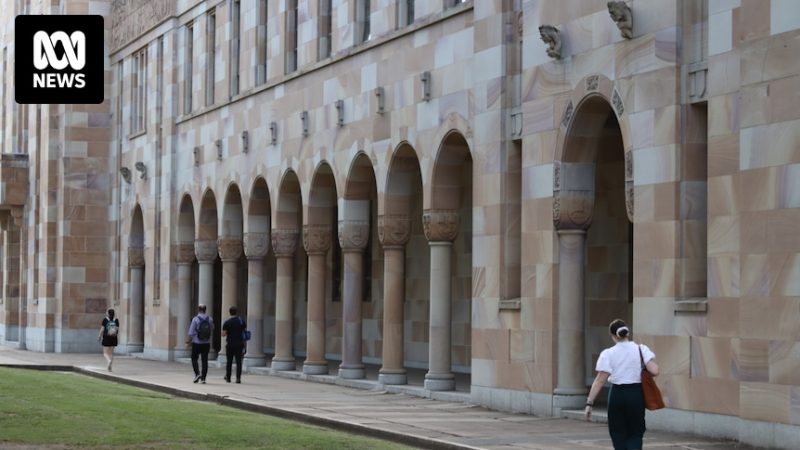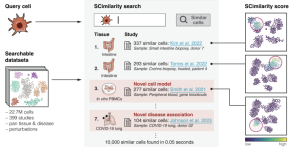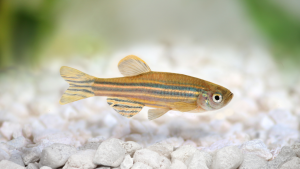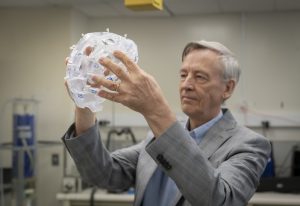Wiley’s ‘fake science’ scandal is just the latest chapter in a broader crisis of trust universities must address

John Wiley & Sons Inc is a publisher of academic journals. The company, better known as Wiley, is listed on the New York Stock Exchange (NYSE) and each year churns out more than 1,400 scientific and other publications across the world. Last year, it turned over more than US$2 billion ($3 billion).
Wiley is a silverback in the strange, circular marketplace of scientific publishing.
The researchers who write for these journals, and the academics who edit them, do this work largely unpaid. They are subsidised by the same universities that also pay healthy sums to then buy the journals in question.
This industry, estimated to be worth $45 billion, is underpinned by giant licks of taxpayer money — including from Australia, which spends $2 billion a year on medical research alone.
Last year, a strange thing happened at Wiley.
In March, it revealed to the NYSE a $US9 million ($13.5 million) plunge in research revenue after being forced to “pause” the publication of so-called “special issue” journals by its Hindawi imprint, which it had acquired in 2021 for US$298 million ($450 million).
Its statement noted the Hindawi program, which comprised some 250 journals, had been “suspended temporarily due to the presence in certain special issues of compromised articles”.
Many of these suspect papers purported to be serious medical studies, including examinations of drug resistance in newborns with pneumonia and the value of MRI scans in the diagnosis of early liver disease. The journals involved included Disease Markers, BioMed Research International and Computational Intelligence and Neuroscience.
As the months ticked by, the number of papers being withdrawn mounted by the hundreds.
By November, Wiley had retracted as many as 8,000 papers, telling Science it had “identified hundreds of bad actors present in our portfolio”.
A month later, in exquisite corporatese, the company announced: “Wiley to sunset the Hindawi brand.”
A window into a thriving, lucrative black market
The Wall Street Journal reported last week that Wiley has now pulled more than 11,300 papers and shuttered 19 journals. In the midst of it all, Wiley’s chief executive Brian Napack was moved on.
The Hindawi scandal offers a window into a thriving black market worth tens of millions of dollars which trades in fake science, corrupted research and bogus authorship.
It also illustrates what is just another front in a much broader crisis of trust confronting universities and scientific institutions worldwide.
For decades now, teaching standards and academic integrity have been under siege at universities which, bereft of public funding, have turned to the very lucrative business of selling degrees to international students.
Grappling with pupils whose English is inadequate, tertiary institutions have become accustomed to routine cheating and plagiarism scandals. Another fraud perfected by the internet age.
Businesses openly advertise the sale of essays to desperate students, whose efforts are freighted with the expectations of far-away, often impoverished parents; their websites even have a toggle to select the grade you’re willing to pay for.
Over an open chat, I asked a top-ranked essay provider on Google what I would have to pay for a masters-level, 3,000 word essay examining Homer’s Iliad which would be guaranteed to score a high distinction. The answer took less than 60 seconds: $238.55. I was assured the paper would not trigger anti-plagiarism software.
This infection — the commodification of scholarship, the industrialisation of cheating — has now spread to the heart of scientific, higher research.
With careers defined by the lustre of their peer-reviewed titles, researchers the world over are under enormous pressure to publish. This is true in Australia, but it is especially true in poorer economies. An impressive number of publications in impressive-sounding journals can open the door to job opportunities and promotions. Citations have become a currency, and few institutions devote the time or resources to check the papers in question.
What is Australia doing about the problem?
Into this integrity gap has poured sharp practice. Shadowy online paper mills are selling authorship credits to those researchers willing to pay for them.
In remarks provided to investigative website Retraction Watch, the UK Research Integrity Office recently described the problem as vast: “These are organised crime rings that are committing large-scale fraud.”
The mills, principally operating from China, India, Iran, Russia and other post-Soviet states, have even been planting stooges in editors’ chairs at certain journals and paying bribes to others to ensure fake papers are published.
A recent Retraction Watch investigation allegedly identified more than 30 such editors, and kickbacks of as much as US$20,000. Academic publisher Elsevier has confirmed its editors are offered cash to accept manuscripts every single week. The British regulator said in January that one unnamed publisher “had to sack 300 editors for manipulative behaviour”.
So, what is Australia doing about the problem?
In 2019, the federal parliament introduced new offences criminalising the advertisement of a commercial academic cheating service, with a penalty of up to two years in jail. The Tertiary Education Quality and Standards Agency polices these provisions, and also has the power to block websites promoting essay mills. In 2022, it blocked access from Australia to 40 websites which had been attracting hundreds of thousands of visits.
These measures do not, of course, address research fraud itself.
More than a decade ago, the government claimed it had this particular problem in-hand, when the Commonwealth’s peak research bodies — the Australian Research Council and the National Health and Medical Research Council — established a new quango to oversee the Australian Code for the Responsible Conduct of Research.
This Australian Research Integrity Committee (ARIC) declares that it works towards “ensuring high levels of community confidence in the integrity of Australian research” so that “the Australian public can have faith in research outcomes”.
Calls for sweeping reform
In fact, ARIC has no role whatsoever in the investigation of academic misconduct.
In news which will surprise no one, governments have seen fit to leave that job to academics themselves: universities and research institutions are responsible for inquiring into allegations of research fraud in what is amicably described as “self-regulation”.
ARIC’s jurisdiction is smaller than the eye of a needle. It investigates only the process by which universities have conducted their investigations. Not their findings. And certainly not whether the allegations amount to a breach of the code.
The committee explicitly tells Commonwealth employees not to give it any evidence of wrongdoing where it is contained in Commonwealth documents, and warns whistleblowers it has no power to protect them from reprisals.
Australia’s former chief scientist Ian Chubb, now with the Australian Academy of Science, is among many who are unimpressed with ARIC’s role, and who have called for sweeping reform.
The academy says the current arrangements create “deficiencies in several areas such as coverage, accountability and transparency”. Late last year, it called for the establishment of a “national oversight mechanism” to ensure the proper rooting out and deterrence of research fraud. That way, taxpayers “can be reassured that their money is invested in individuals and organisations committed to the highest standards of research conduct”.
But the academy failed to grasp the nettle, and shied from the conflict of interest at the heart of the problem, proposing that universities still be allowed to run the misconduct inquiries themselves.
The problem is only becoming more urgent
Bruce Lander, the inaugural head of South Australia’s anti-corruption commission, is among those who believe much more radical surgery is needed.
Lander points out the obvious (and somewhat universal) flaws of the self-regulatory regime. Reporters of misconduct, usually lower down the pecking order, fear their careers will be railroaded by having blown the whistle.
Universities suffer “a real disincentive” to carry out proper investigations, he says, not least because “it is not necessarily in the institution’s best interests for it to become known that someone within the institution has engaged in research misconduct”. They also have no powers to compel the production of evidence or even the cooperation of the accused, meaning “the opportunity to obtain evidence of that misconduct … is significantly reduced”.
Lander says whatever financial drain such an investigatory body entails would be outweighed by the resulting “enhancement of the reputation for integrity” in the university and research sector.
The universities present a formidable lobby in Canberra, however, and have vociferously fought other attempts at regulation, including on questions of tertiary education standards and even the safety of their students on campus.
They have adopted a Wall Street-style approach to their missions, paying exorbitant salaries to their leaders and gunning for eye-watering surpluses. They are interested principally in the protection of their global rankings, to which they tie their prospects of attracting future fee-payers.
The problem is only becoming more urgent. The recent explosion of artificial intelligence raises the stakes even further. A researcher at University College London recently found more than 1 per cent of all scientific articles published last year, some 60,000 papers, were likely written by a computer.
In some sectors, it’s worse. Almost one out of every five computer science papers published in the past four years may not have been written by humans.
Education was Australia’s fourth-largest export industry last year. Even if realpolitik requires the putting to one side of noble, irritating questions of integrity and trust, shouldn’t more be done to protect its value?







